Will Paris conference help the Arctic?
Things are hotting up on the international climate talks front, with one event after another telling us how important it is for the world to reach a new climate treaty at the UN Paris meeting at the end of the year.
I have just written an article: Climate countdown: 200 days to key Paris meeting. While I come to the conclusion that there is no alternative to a new agreement, with time running out, my research has also confirmed my feeling that we are not going to see enough emissions cuts on the table to bring us in any way close to the two degree goal – let alone the 1.5 degree upper limit for global temperature rise which an increasing number of experts say is the safer figure.
After this week’s Petersberg Dialogue in Berlin, hosted by German Chancellor Angela Merkel and attended by French President Francois Hollande, two potential heavyweights in the international climate debate, the message seems to be that there will be a Paris agreement, but that the meeting will be just one more step in a long-term process towards a low-carbon world. There is much talk of achieving that in the second half of the century – and that, I fear, could be too late for the Arctic.
CO2 on the rise, Arctic ice in decline
The NSIDC says the Arctic sea ice extent for April 2015 averaged 14.0 million square kilometers (5.4 million square miles), the second lowest April ice extent in the satellite record. It is 810,000 square kilometers (313,000 square miles) below the 1981 to 2010 long-term average of 15.0 million square kilometers (6.0 million square miles) and 80,000 square kilometers (31,000 square miles) above the previous record low for the month observed in 2007.
With scientists predicting the Arctic Ocean could be sea-ice free in summer in just a few years’ time, the adoption of a long-term approach to tackling climate change is not good news for the icy north.
In March, the global monthly average CO2 concentration crossed the critical 400 parts per million (ppm) mark. That was the first month in modern records with a global concentration of more than 400 ppm. The rise has happened much faster than natural change in the past. It would have taken around 6,000 years for nature to achieve what humankind has done in the past few decades.
CO2 is one of the chief factors responsible for the rise in global temperature. Countries would have to reduce their emissions dramatically to have any chance of achieving the goal set by the international community of keeping global warming to under two degrees Celsius.
Climate creeping up political agenda
The UN Climate Secretariat UNFCCC, based here in Bonn, is working round the clock to prepare the key Paris meeting and ensure that governments put firm pledges on the table. Climate change has also become an issue on the agenda of other key international meetings, like that Petersberg Dialogue mentioned above, a “Climate Week” including a business and climate conference in Paris this week, but also other non-specialised meetings, like the key G7 meeting to be hosted by German at Schloss Elmau, Bavaria, early next month. On the one hand, this shows climate change is gaining in importance on the international political agenda. But it also demonstrates that the annual rounds of UN talks alone cannot bring about the changes needed to halt climate change within the necessary time frame.
Not enough for two-degree target
And while there is no shortage of high-profile meetings with politicians stressing the need for rapid climate action, the pledges so far on the table are not sufficient to cut emissions to the level necessary to keep to the two degree target. Countries have been asked to put their figures on the table by October. So far, 38 countries have submitted.
Jennifer Morgan, Global Director of the Climate Program at the World Resources Institute (WRI) confirmed to me during a recent visit to Germany that there is still a huge gap between what has been promised and what is necessary. She says available solutions are not yet being deployed at the scale or speed required to accomplish an orderly transition to a low-carbon and climate-resilient economy.
“What Paris can help do is close that gap, both by getting stronger targets and commitments from countries, but also by creating a mechanism in the agreement itself that will strengthen targets every five years and by aiming towards a long-term goal of phasing out emissions by mid-century. That type of ambition mechanism can send signals that can accelerate the pace of change -which is very much needed.”
Morgan is a leading member of the “Agreement for Climate Transformation Consortium” (ACT), a group of climate experts from around the world. ACT has produced its own draft legal text for a new world climate agreement, which would include such a mechanism to continually up the climate targets.
Not all gloom and doom?
While even the top emitters China and the USA are signaling they have understood the need for emissions cuts, it is still not clear whether industrialized and developing countries will be able to agree on a “division of labour” – or rather emissions allowances and climate adaptation and loss-and-damage funding – to make an effective agreement possible.
France’s foreign minister Laurent Fabius, who will chair the key Paris summit, told the Petersberg Dialogue in Berlin:
“We must commit ourselves very resolutely because there isn’t an alternative solution, for the simple reason that there isn’t an alternative planet.”
German environment minister Barbara Hendricks spoke of a moral obligation to fight climate change, but stressed the need to take a long-term approach to “terminate the age of fossil fuels”.
With just 200 days to go until the start of the two-week Paris meeting, the sobering assumption seems to be that the conference itself will not come up with pledges enough to keep to the two degree target, let alone the 1.5 percent which many experts say would be the better goal.
But there is also widespread acknowledgement that there is no alternative to a world climate agreement and that mechanisms have to be put in place which will steadily increase the momentum and bring about the transition to a low-carbon economy by the second half of this century. Meanwhile, in a steadily warming world, the ice which sustains the unique and fragile ecosystems of the Arctic, continues to melt.
“Last Ice” claims lives of researchers
This post was to be about a trip I just made to St. Petersburg to talk to students and fellow journalists about reporting climate change. Instead, I am shocked and saddened to be writing of the apparent loss of one of the people whose work featured prominently in my talks there. Polar explorer and researcher Marc Cornelissen, who led our Alaskan Arctic expedition in 2008, the first to be documented on the fledgling “Ice Blog”, disappeared in the Canadian Arctic this week and is presumed drowned after breaking through unseasonably thin ice.
In workshops and discussion panels in St. Petersburg, I found myself recounting, as I often seem to do, some of my experiences during that trip. This was the expedition which strengthened my conviction that reporting on climate change in the polar regions and its relevance for the whole world had to be a main focus of my work in coming years. I have been in the Arctic many times, but somehow that trip seems to be the one I always come back to. Dutch polar explorer and researcher Cornelissen was taking a group of young Europeans to Arctic Alaska, to find out how scientists measure sea ice thickness and other parameters – and how climate change was affecting the local indigenous population. In a talk last week, while I told students and environment journalists in St. Petersburg how that group of young Europeans found out about climate change first-hand during the “Climate Change College” project, I was unaware that the charismatic leader of that trip would not be returning from his latest Arctic expedition.
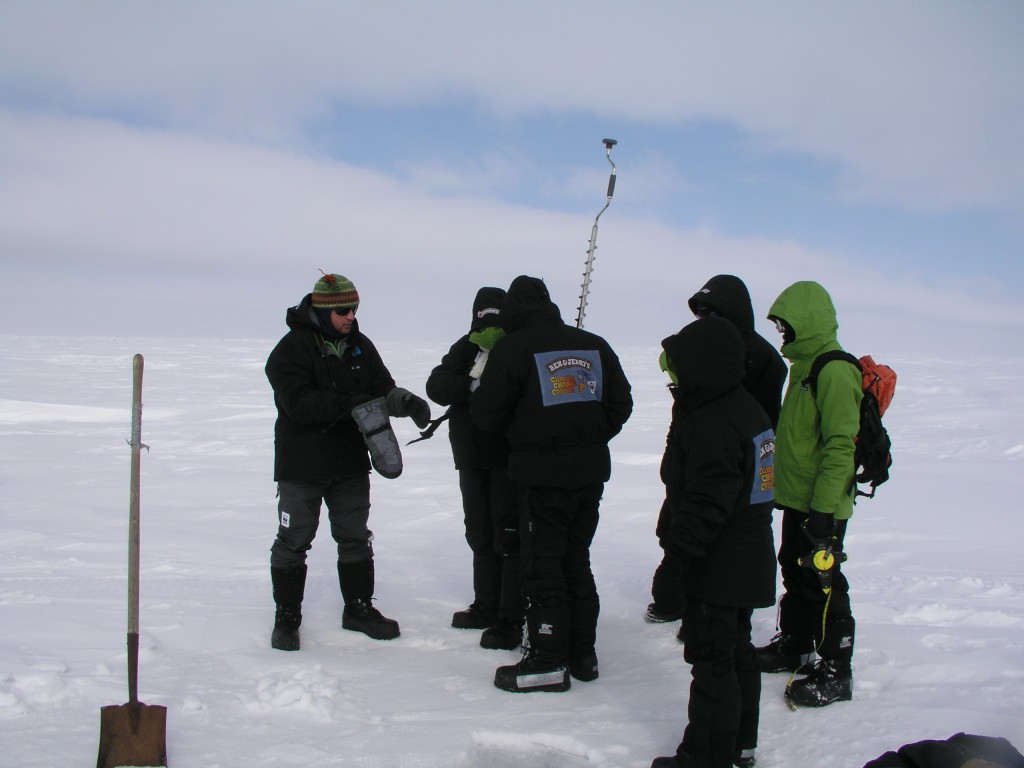
Marc Cornelissen shows climate ambassadors how to drill to measure ice thickness (i.Quaile, Alaska, 2008)
“Search and rescue” becomes “recovery”
Back in Germany I opened my Ipad one morning this week to find urgent messages from two friends I first met during that Alaskan trip – one in the USA, one in Europe – telling me Marc and his colleague Philip de Roo had gone missing on their latest climate fact-finding mission in the Canadian High Arctic. Since then, the search and rescue operation has been called off, the two researchers presumed drowned.
Marc, founder of the organisation Cold Facts, which supports scientific research in polar areas, was travelling on skis with his colleague, for a mission called the “Last Ice Survey“. That title was to become tragically apt in a way they had not anticipated. The two were measuring the thickness of the ice in the “Last Ice Area”,, which is thought to be the place where summer sea ice will continue longest as climate change progresses.
Arctic conditions “tropical”
In his last audio message, sent on April 28th, Marc Cornelissen, always with a great sense of humour, recounts how the weather had been so hot he had to ski in his underpants. He talks of thin ice ahead, and of the likely need to alter course to avoid it.
“We think we see thin ice in front of us, which is quite interesting, and we’re going to research some of that if we can”, Marc said in the last voice mail. Tragically, it seems that research was to prove fatal for the two curious travellers.
Next day the Royal Canadian Mounted Police in Resolute Bay was alerted by a distress signal from the pair, approximately 200 kilometres soiuth of Bathurst Island. The search aircraft sighted one of their sleds, partly unpacked, on the ice with their sled dog, close to a hole in the ice. The other sled was in the water with various bits of equipment.The search and rescue venture was eventually abandoned. The dog has been rescued, but the operation to locate Marc, Philip and their equipment and bring it home, has been halted by bad weather.
The remote, cold, Arctic is a risky place to travel at the best of times. Cornelissen and de Roo were experienced polar explorers. They knew the risks. What they presumably did not know, was just how thin that “last ice” had become.
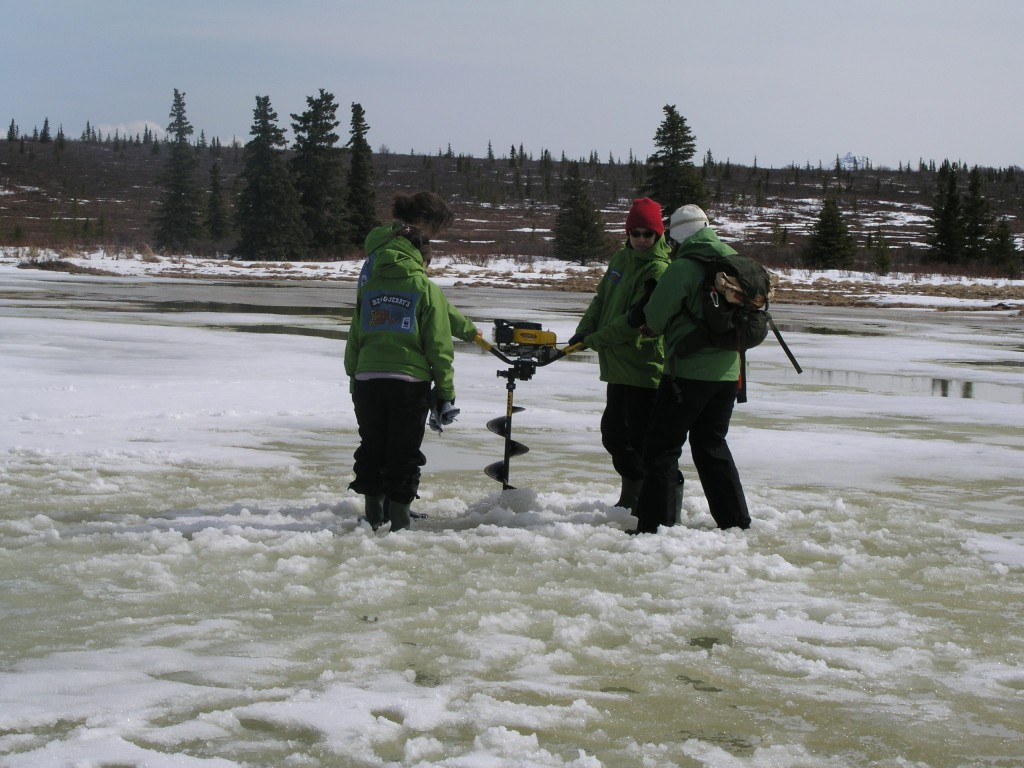
Cornelissen’s team drills to measure methane emissions from melting permafrost (I.Quaile, Denali, 2008)
Climate change is affecting the Arctic faster than any other area of the world. That was the message behind the work of the two researchers . Perhaps it was changing faster than they could have imagined.
Beautiful, fragile, perilous
I am deeply moved by the loss of these two talented and committed fellow Arctic-enthusiasts, who would still have had so much to offer the world. How ironic that the rapid ice melt they were out to document was, it seems, to claim their lives. How sad if these two had to die to underline the point.
A year and a half ago, I narrowly escaped with my life when I slipped off an icy mountain ledge in the alps. Since then, I have been more keenly aware than ever of that ambivalent nature of ice – the attraction of its beauty and the unpredictable dangers. I remember the feeling “this cannot be happening to me”, as I thought the ice I loved was throwing me to my death. I am somehow haunted by images of what Marc and Philip might have sensed in those final, precarious moments in their beloved Arctic.
Marc Cornelissen was a charismatic character, full of stories and enthusiasm for the polar regions. I remember how we laughed as he told us the tale of the “polar bear that caught me with my pants down”, during one of his expeditions. But humour and positive outlook never detracted from his concern for the safety and well-being of his charges, as he guided them onto the sea ice or frozen Arctic lakes. Cornelissen was also a motivating guide and mentor to many who have gone on to make their professions in the fields of climate, environment and sustainability.
He also had an unerring sense of the issues that would emerge ever larger in the polar climate debate in the years to come: sea ice melt, coastal erosion, melting permafrost, methane emissions.
“Everything is connected”.
Why is it I always come back to that particular Arctic trip? It is partly because it was an encounter between commited, idealistic, prosperous young Europeans, with their first climate-saving projects already in the bag, and the “locals” of Barrow, the northernmost – and so very different – settlement in the USA. These were a mixture of Inupiat traditional whale-hunters, who depended on stable sea ice to hunt – and oil workers, who owed their livelihood to the fossil fuels which are helping to melt it.
“Everything is connected” was the conclusion that dawned on the young Danish member of the group, as we stood by a visitors’ centre to look at glaciers further south – which had retreated so far, they were no longer visible from that point.
Irish “climate ambassador” Cara Augustenborg, posted her own moving tribute to Cornelissen earlier this week.
The network that was born during that Alaskan trip is still thriving. The climate ambassadors have gone on to make their ways and play their parts in the effort to understand the workings of the planet and create a low-carbon future.
For all that, you need inspiring leaders, and people who are not afraid to take on the risks of the remote, icy, unpredictable and rapidly changing Arctic. In the last personal message I got from Marc Cornelissen, he had been looking at the Ice Blog and said how pleased he was that I had “stayed with the Arctic”. Me too, Marc. And I am sorry I will never be able to interview him on what seems to have been his final expedition to the “Last Ice”.



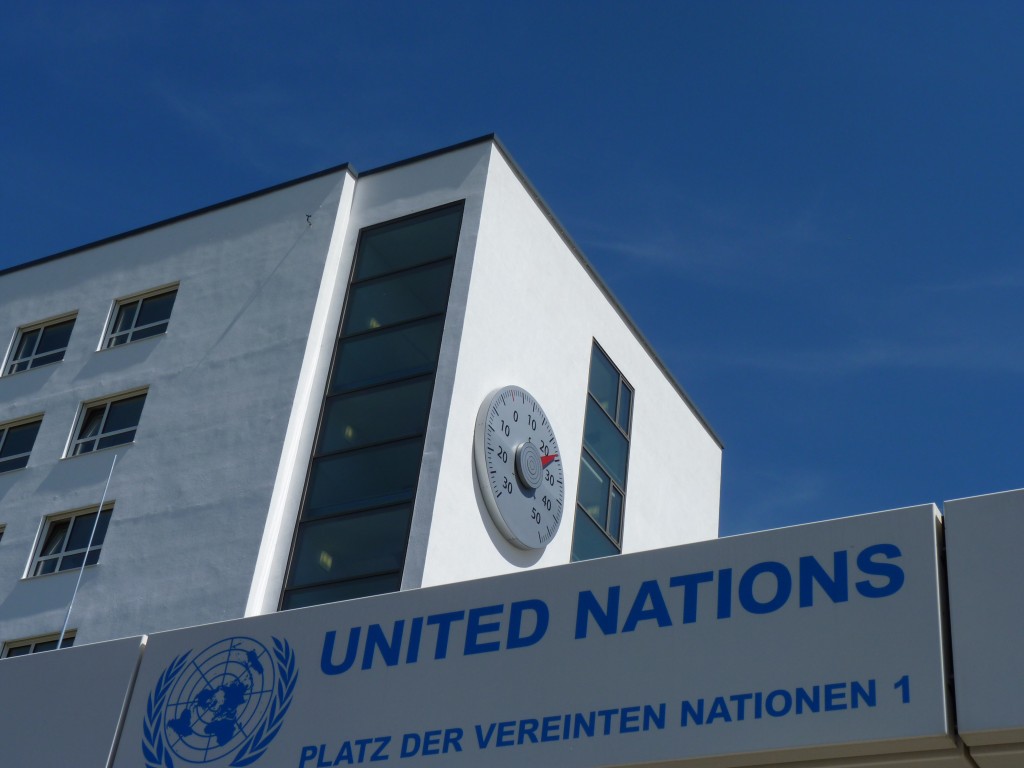
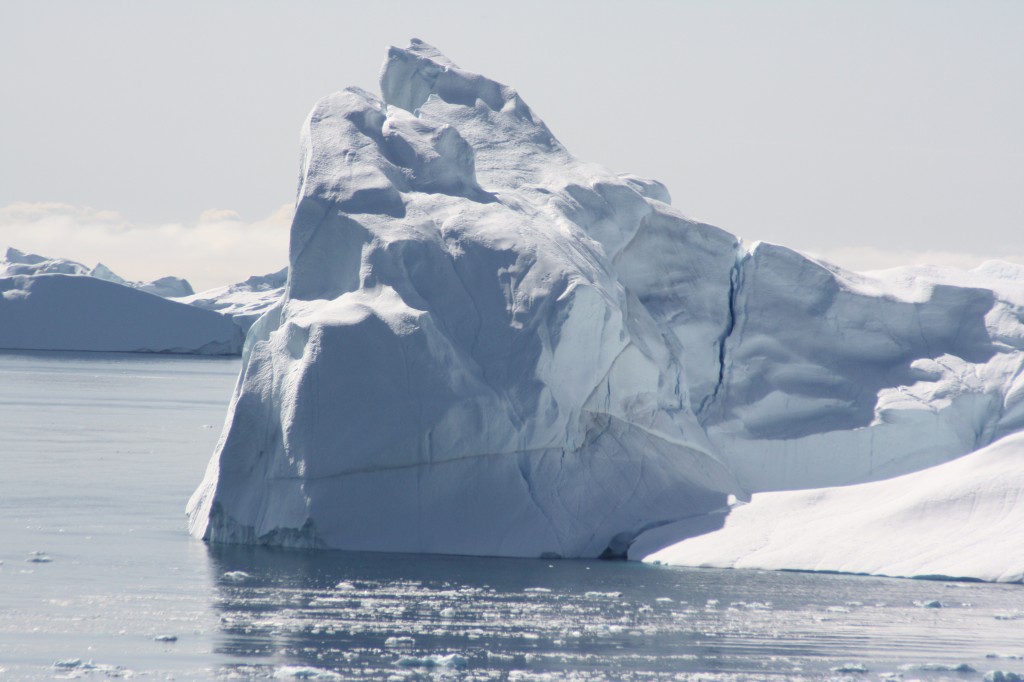
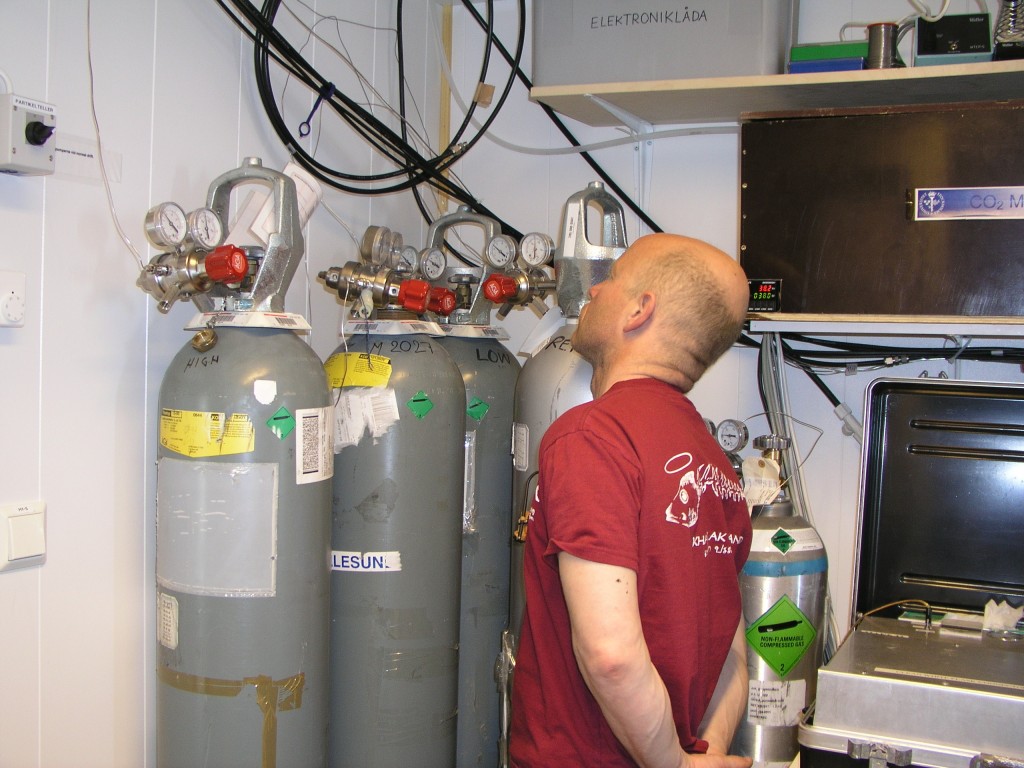


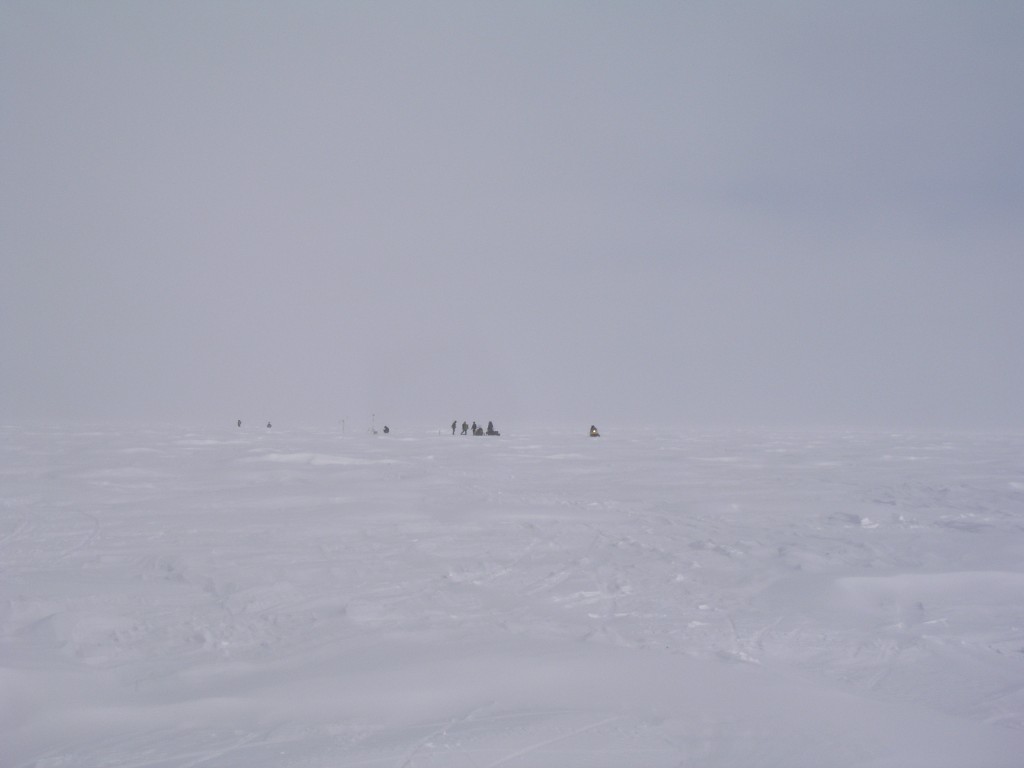












Feedback